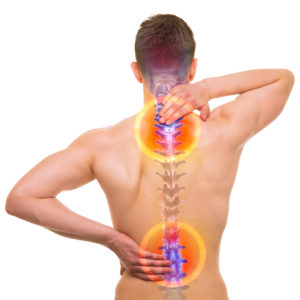Back and neck pain can either be acute or chronic and can affect people of any age group. In the acute setting it can be as a result of muscle strain or spasm and often related to poor posture and positioning and at times related to injury. In the chronic setting, this is observed with aged and progressive arthritic changes along the spinal column that can involve the bones, joints or ligaments that keep the spine functioning in harmony.
Common causes of back/neck pain:
strained muscles or ligaments, spine arthritis, bulging or herniated disc, facet joint arthritis, sacroilitis, pinched nerve, obesity, infection, mood disorders such as depression and anxiety, poor sleep hygiene, obesity, pregnancy and strenuous physical activity.
Potential symptoms that you may experience with this condition:
- Muscle stiffness and spasms
- Back at neck pain
- Pain referred from back into the extremities
- Pain occurring after certain activities, i.e bending, twisting, sitting, standing or lifting objects
- Pain with weather changes
- Pain to the touch of painful area
- Numbness and tingling
- Weakness of back or extremities
**Note: if you experience progressive weakness, loss of urine or bowel control or difficulty with balance as result of your worsening or sudden back pain. You need to notify your doctor immediately.
Treatment options for this condition:
- Physical therapy:
- Muscle stretching and strengthening
- Core strengthening
- Local ultrasound therapy
- Chiropractor therapy
- Cognitive Behavioral therapy (CBT)
- Medications:
- Anti-inflammatory therapy
- Nerve pain medications
- Muscle relaxants
- Hot and cold compressors
- Interventions:
- Diagnostic nerve blocks followed by radiofrequency ablation
- Epidural steroid injections: Interlaminar and Transforaminal
- Spinal cord stimulator
- Trigger point injections
- Surgery: for severe cases that are refractory to options 1-4 above. At times surgery may be used as first line for treatment as it can hold the best outcomes.
- Developing therapies: Stem cell therapy

